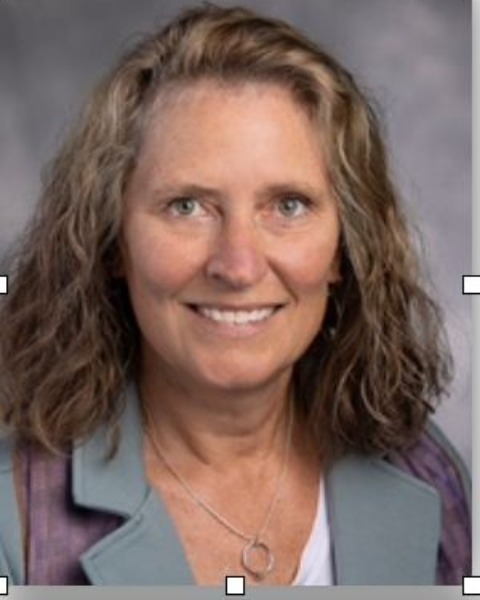Program Evaluation
Program: Council on Children and Disasters
P3A225: Respiratory Surge 2022 - Lessons from One Regional Pediatric Disaster Care Center Excellence
Sunday, October 22, 2023
4:15 PM - 4:45 PM US EDT
Location: Walter E. Washington Convention Center, Exhibit Hall A
Background: Region V for Kids (Region V) is one of the Administration for Preparedness and Response (ASPR), Pediatric Disaster Care Centers of Excellence, created in 2019, with a goal of harnessing and developing best-practices around disaster preparedness and response to be shared with other children’s and non-children’s hospitals and affiliated entities in the region as the country moves towards a national model of pediatric disaster preparedness and response. The respiratory surge of there viruses, respiratory syncytial virus (RSV), influenza and covid peaking at nearly the same time in the fall and winter put unprecedented pressures on the healthcare system, but especially children’s hospitals.
Methods: Region V, located in the midwest has 9 partner children’s hospitals that collected information to create a combined after action report for the respiratory surge. Information was collected in categories of space, staff, stuff, and strategies, with wise practices, lessons learned, and/or reflections and open comments for each category.
Results: Children’s hospitals in the region used optimization of space to be able to care for patients and decompress emergency departments by creating protocols to initiate therapies normally intended for Intensive Care Units (ICU) to be done in locations outside of these units, in addition to utilizing these similar protocols to support healthcare providers outside of children’s hospitals to care for patients, including telehealth support. Staffing at children’s hospitals had not fully recovered from the Covid pandemic, created unique work arounds, including buddy systems for nursing and respiratory therapist; and redeployment of nonclinical personnel to assist with restocking supplies and assist with waiting room information and distraction. Addressing the supplies and stuff needed to care for respiratory patients care remained challenging due to ongoing shortages. One mechanism utilized was to provide daily banners on the electronic health record to update providers. Incorporating system level strategies were applied differently across children’s hospitals, including the implementation of incident command structure (ICS), early in the respiratory surge and use of state wide pediatric centric bed tracking system which was vital to situational awareness of critical care bed space within the state.
Conclusion: The ability for children’s hospitals to participate in a regional situational awareness along with state entities, during a viral surge primarily effecting children is an effective way to share wise practices and address gaps. There were lessons learned during this event that can serve and recommendations for the next event to children’s hospitals and the United States healthcare system. Recommendations to federal partners to implement within our healthcare system are to improve overall pediatric readiness, improve coordination within federal agencies and enhance data and analytics across the nation before the next event.
Methods: Region V, located in the midwest has 9 partner children’s hospitals that collected information to create a combined after action report for the respiratory surge. Information was collected in categories of space, staff, stuff, and strategies, with wise practices, lessons learned, and/or reflections and open comments for each category.
Results: Children’s hospitals in the region used optimization of space to be able to care for patients and decompress emergency departments by creating protocols to initiate therapies normally intended for Intensive Care Units (ICU) to be done in locations outside of these units, in addition to utilizing these similar protocols to support healthcare providers outside of children’s hospitals to care for patients, including telehealth support. Staffing at children’s hospitals had not fully recovered from the Covid pandemic, created unique work arounds, including buddy systems for nursing and respiratory therapist; and redeployment of nonclinical personnel to assist with restocking supplies and assist with waiting room information and distraction. Addressing the supplies and stuff needed to care for respiratory patients care remained challenging due to ongoing shortages. One mechanism utilized was to provide daily banners on the electronic health record to update providers. Incorporating system level strategies were applied differently across children’s hospitals, including the implementation of incident command structure (ICS), early in the respiratory surge and use of state wide pediatric centric bed tracking system which was vital to situational awareness of critical care bed space within the state.
Conclusion: The ability for children’s hospitals to participate in a regional situational awareness along with state entities, during a viral surge primarily effecting children is an effective way to share wise practices and address gaps. There were lessons learned during this event that can serve and recommendations for the next event to children’s hospitals and the United States healthcare system. Recommendations to federal partners to implement within our healthcare system are to improve overall pediatric readiness, improve coordination within federal agencies and enhance data and analytics across the nation before the next event.

Deanna L. Dahl Grove, MD (she/her/hers)
Professor of Pediatrics
UH Rainbow Babies and Children's Hospital
UH Rainbow Babies and Children's Hospital
Cleveland, Ohio

.png)
